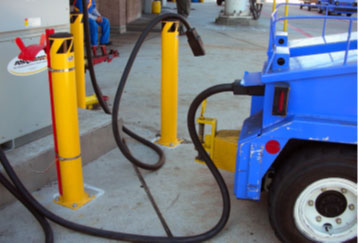
Airport Sustainability: Ensuring Our Future

Sustainability can be defined as “development that meets the needs of the present without compromising the ability of future generations to meet their own needs,” published by the World Commission on Environment and Development, in 1987. According to the Airports Council International (ACI), sustainability practices in aviation are further defined as “a holistic approach to managing an airport so as to ensure the integrity of the Economic viability, Operational efficiency, Natural resource conservation, and Social responsibility (EONS) of the airport.”
Several organizations throughout the world contribute research and guidance on sustainability. Among the organizations focusing on aviation are the Sustainable Aviation Guidance Alliance (SAGA), the Airport Cooperative Research Program (ACRP) of the Transportation Research Board (TRB), American Association of Airport Executives (AAAE), ACI, Airports Consultant Council (ACC), and the Federal Aviation Administration (FAA).
Environmental Sustainability Practices
Sustainable practices protect local and global environments from pollution and manage natural resources through conservation and reuse. Sustainability goals and targets for general aviation (GA) airports typically include air quality, carbon emission control, waste management/recycling, energy usage, noise abatement, surface transportation, water quality and conservation, and facility operations and management.
A sustainable master plan can incorporate these goals into the planning process. Once a plan is put together, a sustainability assessment follows to provide for a baseline to document the airport’s current resource consumption and to determine the status of environmental programs. Tracking and analysis may continue on a monthly, quarterly or annual basis.

The assessment audits elements such as energy usage, alternative energy usage, waste disposal volumes and destinations, recycling programs, greenhouse gas emissions, stormwater discharges, water usage, indoor environmental quality issues, landscape maintenance, and general custodial services through field investigations and historical documentation.
GA airport staff should educate themselves on sustainability initiatives and funding sources. It is important that airport sponsors who include local governments and elected officials understand and support these efforts. Regional agencies could provide a task force and training to assist local airports and their sponsors with setting goals and obtaining funding. While the spectrum of sustainability practices is quite broad, each airport must analyze which are the most cost-efficient and attainable goals that can be reached and sustained into the future.
These efforts are becoming more of a requirement for our airport systems rather than just a notion to help our environment. Regulatory requirements are becoming more stringent in many aspects that encourage such practices. The aviation and airport community must continue to show commitment to reducing its operational footprint in the future.
Economic Sustainability Practices

On the other side of the coin, economic sustainability is more clearly needed for airport everyday operations and success. As funding streams can be scarce in tough economic times, many airports are turning to more business oriented approaches to increase revenue and ensure longevity.
GA airport facilities can be expected to contribute significantly to the local community in terms of jobs, income, and total economic output. Capital investments in aviation facilities by the public and private sectors stimulate the economy further. A new metric, Airport Community Value (ACV), should be utilized by sponsors and managers to assess the value of an airport now and, with long-term support, in the future.

